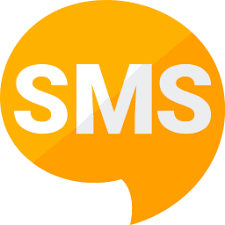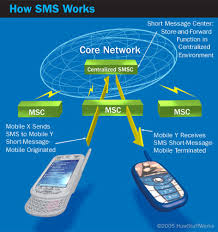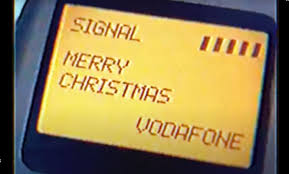
 image ©iconexperience.com
image ©iconexperience.com
 image ©computer.howstuffworks.com
image ©computer.howstuffworks.com
 image ©Vodafone
image ©Vodafone
SMS is the Short Messaging System available on all mobile phones. An app on a user's phone will allow them to send and receive SMS messages. An SMS message is limited to 1120 bits which will be coded to 160 7-bit characters or 140 8-bit characters. Thus SMS is a basic SMS messaging system.
The first SMS was sent in the UK by a Vodafone engineer on 3rd December 1992. It said 'Happy Christmas'.
The customer SMS service grew out of the system used by service engineers to communicate with each other. But the MNOs soon realised this was a feature that would be useful to customers and could be used to make them money. At the start each SMS message was charged a rate of 10p per message. Later were messages bundled into contracts and now unlimited messages are included in all but the most basic customer package.
The SMS message is sent over the control channel and not over the data network. The control channel manages the phone and devices on the metwork, and it is through this control channel that messages are sent. As the strength of a signal degenerates with distance from the antenna, the data (HTTP connections) services are lost first. Then the phone connection can become crackly and then lost leaving the SMS system as the most reliable in area of poor or very little connection.
When data is sent over HTTP it is the client that requests the data, a pull technology. Email, that uses the HTTP protocol so every so often your email client connects to the servers to see if there are any messages for you. SMS is totally different, it uses a push technology. The SMS message can be sent at any time, does not rely on the recipient being online. These SMS messages are then pushed to the recipient's phone from the SMSC, rather than the recipient having to look for messages. These SMS messages are fundamentally different from other messaging systems.
Sending an SMS
- Sender creates the SMS message within an App on the phone
- The App sends the message to the SMSC (Short Message Switching Centre) via the control channel. Within the settings of a phone there will be the phone number of the local network SMSC.
- The message is stored within the SMSC which then finds the recipient.
- If the receiver is on the same network as the sender, the message is then sent to the reciever
- If the receiving phone is on another network, the SMSC forwards the message to that network's SMSC for this network to store and forward the message to the recipient
- Tracking is possible for SMS messages. The sender will know that the recipient has received the message.
© mobilephonetechnology.co.uk all rights reserved 2017-2025
